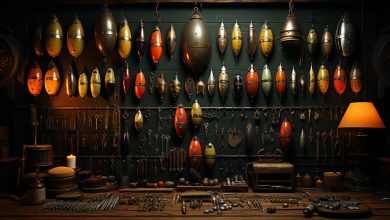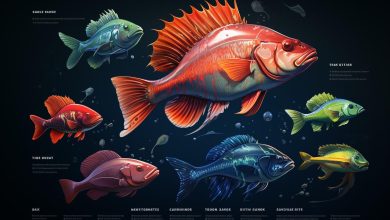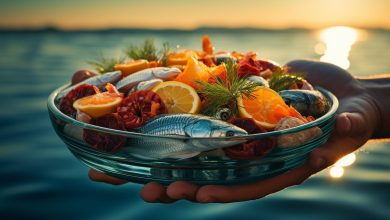Kayak Fishing Techniques For Beginners
Are you interested in trying out kayak fishing but don’t know where to start? Kayak fishing is an exhilarating and rewarding experience that allows you to get up close and personal with nature while catching fish. However, it can be overwhelming for beginners who are new to both kayaking and fishing. But fear not, with the right techniques and equipment, anyone can become a successful kayak angler.
First things first, choosing the right kayak and paddle are crucial for a comfortable and efficient fishing experience. You want a stable kayak that is designed for fishing, preferably one with plenty of storage space for your gear. Additionally, you should invest in a high-quality paddle that is lightweight yet durable.
Once you have the right equipment, it’s time to learn about essential fishing gear and basic kayak fishing techniques to set yourself up for success on the water.
Choose the Right Kayak and Paddle
Picking out the perfect vessel and paddle can make or break your first time out on the water. Kayak stability is a crucial factor to consider when choosing your kayak. A wider, flatter hull will provide more stability for beginners while a narrower, pointed hull will allow for faster speeds but requires more balance.
Ensure that you feel comfortable and secure in your kayak before heading out on any fishing trip. Proper paddling technique is also essential in ensuring an enjoyable experience. Holding the paddle with both hands, keep your arms straight and use your torso to rotate back and forth rather than just using your arms.
This will not only make paddling easier but also prevent strain on your shoulders and arms. Remember to take breaks and stretch throughout your trip to avoid fatigue. With the right kayak and proper paddling technique, you’ll be ready to move onto the next step of gathering essential fishing gear without any obstacles.
Essential Fishing Gear
When it comes to essential fishing gear, you need to have the right tools for the job. You’ll want to make sure you have a good rod, reel, and line that are appropriate for the type of fish you’re after.
Bait and lures are also important components that can make or break your success on the water. Don’t forget about having a well-organized tackle box to keep everything in order and easily accessible.
Rods, Reels, and Lines
Choosing the right gear for your style of angling can make or break your experience on the water, so it’s important to do your research on rods, reels, and lines before hitting the waves. Here are some things to consider when selecting these items:
-
Rods: Look for a rod that’s specifically designed for kayak fishing, as they tend to be shorter and easier to maneuver in tight spaces. Consider factors such as length, power, and action when choosing a rod.
-
Reels: Choose a reel with a high gear ratio, which means it’ll retrieve line quickly. Look for one with enough drag power to handle larger fish.
-
Lines: Different types of fishing lines have different strengths and characteristics. Monofilament is versatile and affordable but can stretch under pressure. Braided line has minimal stretch but may require a leader due to its visibility.
When selecting your gear, keep in mind that quality equipment tends to last longer and perform better than cheaper alternatives. It’s also important to maintain your gear properly by cleaning it after use and storing it in a dry place.
Now that you’ve chosen your gear, let’s move on to bait and lures – an essential part of any successful fishing trip.
Bait and Lures
Now it’s time to spice things up and reel in a big catch with some irresistible bait and lures – get ready to have some fun!
There are different types of bait and lures, each with their own benefits and drawbacks. Live bait such as worms, minnows, or shrimp can be very effective since they mimic the natural prey of fish. However, live bait can be messy and require additional maintenance on your kayak.
Artificial lures come in various shapes, sizes, colors, and materials such as plastic or metal. They can also imitate different types of prey like insects or small fish. The benefit of using artificial lures is that they can last longer than live bait and be less messy.
To use these effectively while kayak fishing, you should match the type of lure to the species you’re targeting and consider factors like water depth, temperature, clarity, and current speed. Experimenting with different retrieval techniques can also help attract more bites. For example, try twitching or jerking your rod tip to create a lifelike motion for a soft plastic worm lure or steadily reeling in a crankbait at varying speeds to mimic a fleeing fish.
Don’t forget to check local regulations regarding the use of certain baits/lures or catch-and-release policies.
Ready for even more fun? Let’s talk about how you can organize all your gear with a tackle box!
Tackle Boxes
You’re a seasoned angler, so you know that having an organized tackle box can make all the difference in finding the right bait or lure quickly and easily. Here are some organization tips to help you keep your tackle box in top shape:
-
Categorize your lures based on their type (crankbaits, spinners, jigs) and color.
-
Use clear plastic bags or small containers to keep hooks, weights, and other small items separate.
-
Label each compartment in your tackle box for easy access.
-
Take the time to clean and maintain your tackle box after every fishing trip.
Maintaining an organized tackle box will not only save you time but also prevent frustration on the water when you can’t find what you need.
Now that you have a well-organized tackle box, let’s move onto some basic kayak fishing techniques that will help increase your chances of catching fish on any given day.
Basic Kayak Fishing Techniques
When it comes to kayak fishing, there are three basic techniques you need to master: paddling, casting, and setting the hook.
To paddle effectively, keep your arms straight and use your core muscles to power your strokes.
When casting, start by keeping your rod tip low and using a smooth motion to send your bait or lure where you want it.
And when you feel a bite, be sure to set the hook quickly by pulling back on the rod with a sharp motion.
With practice and patience, these techniques will become second nature for any beginner kayaker.
Paddling Techniques
Mastering the right strokes while gliding through the water is like dancing on a stage, and it’s crucial for successful kayak fishing. To start, focus on maintaining correct posture and using efficient strokes.
Sit straight up with your feet in front of you and use your legs to keep balance. Your arms should be slightly bent at the elbows, with your hands positioned shoulder-width apart. This will allow you to have better control over your paddle.
When paddling against wind or currents, try to angle your strokes towards the side where they’re coming from. This will help you stay on course and avoid getting pushed off track. If you find yourself struggling against strong winds or currents, remember to remain calm and take deep breaths.
Keep practicing until these techniques become second nature to you. Now that you’ve got the hang of paddling efficiently through different conditions, let’s move onto casting techniques without skipping a beat!
Casting Techniques
Get ready to take your kayak fishing game to the next level with these awesome casting tips! As a beginner, it’s important to focus on casting accuracy and distance control.
The key to accurate casts is all in the wrist flick. Start by holding your rod at about 11 o’clock (or 1 o’clock if you’re left-handed) and smoothly bring it back behind your shoulder. Then, quickly flick your wrist forward as you release the line, aiming for your desired target. Remember not to overpower your cast or use too much force – this will only result in a tangled mess.
To improve distance control, try using different types of lures and adjusting the weight of your bait accordingly. Heavier baits require more force when casting while lighter ones don’t need as much power. Additionally, pay attention to wind direction and adjust your casting angle accordingly. With practice, you’ll be able to accurately cast further distances with ease.
Now that you’ve mastered some basic casting techniques, let’s move onto setting the hook for even better fishing success!
Setting the Hook
Now that you’ve learned some casting techniques, it’s time to focus on setting the hook. Proper technique is crucial for successfully landing a catch.
Here are three important tips to keep in mind:
-
Keep your line tight: When you feel a tug on your line, resist the urge to immediately yank back. Instead, reel in any slack and steadily pull back until you feel resistance. This will ensure that the hook sets firmly.
-
Set the hook with force: Once you’ve felt resistance, give a quick and sharp jerk of your rod tip upwards to set the hook deep into the fish’s mouth.
-
Avoid common mistakes: One mistake beginners often make is not paying attention to their line tension or not having enough patience when waiting for a bite. Remember, setting the hook too early can result in pulling it out of the fish’s mouth, while setting it too late may allow them to escape.
By following these tips, you’ll increase your chances of reeling in a successful catch!
Now let’s move on to some safety tips before hitting the water again.
Safety Tips
Staying safe on the water is crucial, so let’s go over some tips to keep you protected while out there. First and foremost, make sure you wear a life jacket at all times. Accidents can happen, and it only takes a moment for things to go wrong. A properly fitted life jacket can mean the difference between life and death in an emergency situation.
In addition to wearing a life jacket, it’s important to be prepared for emergencies. Pack a first aid kit, bring plenty of water and snacks, and know how to use any safety equipment on your kayak. Familiarize yourself with the area you’ll be fishing in and check weather conditions before heading out. By taking these precautions, you’ll minimize risk and ensure that your time on the water is enjoyable and safe.
Now let’s move onto advanced techniques for experienced anglers!
Advanced Techniques for Experienced Anglers
Now that you’ve mastered the basics, it’s time to take your kayak fishing skills to the next level.
If you’re looking for more advanced techniques, consider trying trolling, jigging, or using electronics to find fish.
Trolling involves dragging a lure behind your kayak at a steady pace to entice fish to bite.
Jigging involves dropping a weighted lure up and down in the water column to mimic natural bait movements.
Using electronics such as fish finders can help you locate schools of fish and increase your chances of a successful catch.
Trolling
If you’re looking to catch bigger fish, trolling is a great option as it allows you to cover more ground and potentially increase your chances of hooking a monster.
Did you know that some anglers have caught record-breaking fish while trolling?
To successfully troll, it’s important to maintain a consistent speed that matches the type of bait or lure you’re using. Different types of fish prefer different speeds, so experiment with your trolling speed until you find what works best for the species you’re targeting.
Another key factor in successful trolling is bait presentation. You want your bait or lure to look as natural as possible as it moves through the water. This means paying attention to how your lure looks and moves behind the kayak, adjusting accordingly if needed.
Keep an eye on the line tension too – if it suddenly goes slack, there may be something wrong with your bait presentation or even a fish on the line!
Once you’ve got trolling down pat, it’s time to move onto another technique: jigging.
Jigging
Jigging is a versatile method that can be tailored to suit different fish species and conditions, making it a valuable addition to any angler’s arsenal. Here are some things you should know about jigging:
-
Types of jigs: There are many types of jigs available for different fishing scenarios. Some popular ones include bucktail jigs, vertical jigs, and butterfly jigs. Each type has its own unique characteristics that make them effective in different situations.
-
Bucktail jigs are great for targeting bottom-dwelling fish like flounder and striped bass.
-
Vertical jigs work well when fishing in deep water or strong currents.
-
Best times to jig: While jigging can be successful year-round, there are certain times when it’s more effective than others. Generally speaking, early morning and late afternoon/early evening tend to be the best times for jigging. This is because during these times, the light levels are lower, which makes it harder for fish to see your lure. As a result, they’re more likely to strike at anything that looks tasty.
Now that you know the basics of jigging, let’s move on to another important aspect of kayak fishing: using electronics to find fish.
Using Electronics to Find Fish
You can up your game by using electronics to locate fish, giving you an advantage over those who rely solely on their instincts and experience. Understanding sonar technology is crucial when it comes to kayak fishing. Sonar devices use sound waves to detect objects underwater, including fish. By understanding the readings, you can determine the size and depth of the fish, which can help you choose the right bait or lure.
GPS navigation is another useful tool for kayak fishing. With GPS technology, you can mark your favorite fishing spots and navigate back to them easily. This is especially helpful if you are fishing in unfamiliar waters or if you want to revisit a successful spot from a previous trip. Additionally, GPS allows you to track your movements on the water, so if you catch a big one, you can mark the location and return later with better gear or more time.
| Type of Electronics | Benefits |
|---|---|
| Sonar Devices | Can detect objects underwater such as fish; helps determine size and depth of fish |
| GPS Navigation | Marks favorite fishing spots; navigates back to them easily; tracks movements on water; marks location of catches |
By incorporating electronics into your kayak fishing techniques, you are sure to have a more successful day on the water. Remember that understanding sonar technology and GPS navigation is crucial for maximizing these tools’ benefits fully. So take some time before heading out on your next trip to learn about these technologies and how they can enhance your kayak fishing experience!
Conclusion
Congratulations! You’re now equipped with the knowledge of basic kayak fishing techniques for beginners. Remember to choose the right kayak and paddle, as well as essential fishing gear before heading out on your adventure. With a little bit of practice, you’ll be able to master the art of kayaking and fishing in no time.
But wait, you might be thinking that kayak fishing is too difficult or dangerous for beginners. Don’t worry! As long as you follow safety tips and start with basic techniques, there’s no reason why you can’t enjoy this exciting activity.
Be patient with yourself and don’t hesitate to ask for help from experienced anglers or instructors. So grab your gear, hop on your kayak, and get ready to reel in some fish!



